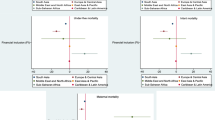Abstract
Recent changes in life expectancy among race and sex groups in New York City were evaluated by analyzing the relative effects of different causes of death in 1983 and 1992, a period in which life expectancy at birth declined by 1.1 years among white males, remained unchanged among black males, and increased 1.2 years among white and black females. Heart disease was found to be the leading cause of death making positive contributions to changes in life expectancy regardless of race or sex, and HIV/AIDS was the leading negative contributor. Overall, deaths from infectious diseases and external causes are becoming more important compared to degenerative conditions in explaining trends in life expectancy in New York City. Past improvements in survival due to reductions in infant deaths are being reversed due to an increase in deaths from preventable causes such as violence and AIDS. Future gains in longevity may require a greater emphasis on policies and programs emphasizing conflict resolution and HIV prevention.
Similar content being viewed by others
References
Blum, S., Singh, T.P., Gibbons, J., Fordyce, E.J., Lessner, L., Chiasson, M.A., Weisfuse, I.B. & Thomas, P.A. (1994). Trends in survival among persons with acquired immunodeficiency syndrome in New York City: The experience of the first decade of the epidemic, American Journal of Epidemiology 139: 351–361.
CDC, Centers for Disease Control (1994). HIV/AIDS Surveillance Report (6)2: 1–39.
CDH, Chicago Department of Health, Epidemiology Program (1995). Big cities health inventory, 89 pp.
Fordyce, E.J., Blum, S., Shum, R., Singh, T.T., Chiasson, M.A. & Thomas, P. (1995). The changing AIDS epidemic in New York City: A descriptive birth cohort analysis of AIDS incidence and age at diagnosis, AIDS 9: 605–610.
Kochanek, K.D., Maurer, J.D. & Rosenberg, H.M. (1994). Why did black life expectancy decline from 1984 through 1989 in the United States?, American Journal of Public Health 84: 938–944.
NCHS, National Center for Health Statistics (1983 & 1992). Multiple cause of death public use data tapes for New York City. Hyattsville, MD: Public Health Service.
NCHS (1995). Advance report of final mortality statistics 1992 (42)6: supplement. Hyattsville, MD: Public Health Service.
New York City Department of Health, Office of Vital Statistics (1992). Summary of vital statistics 1990. New York.
New York City Department of Health, Office of AIDS Surveillance (1995). Trends in reported AIDS cases in New York City. New York.
New York City Department of Health, Bureau of Community and Occupational Health (1995). Injury mortality in New York City: 1980–1990. New York.
Smith, D.P. (1995). Survival Program 4.1., and Users guide. University of Texas School of Public Health.
US Bureau of the Census (—-). Modified age, race and sex population of the United States, 1980 and 1990. Washington, DC: US Department of Commerce.
WHO (1977). Manual of the international statistical classification of diseases, injuries and causes of death, Ninth Revision, 1975 (ICD-9). Geneva: World Health Organization.
Author information
Authors and Affiliations
Rights and permissions
About this article
Cite this article
Fordyce, E.J., Shum, R., Singh, T.P. et al. Causes of death contributing to changes in life expectancy in New York City between 1983 and 1992. Population Research and Policy Review 16, 197–211 (1997). https://doi.org/10.1023/A:1005720325109
Issue Date:
DOI: https://doi.org/10.1023/A:1005720325109




